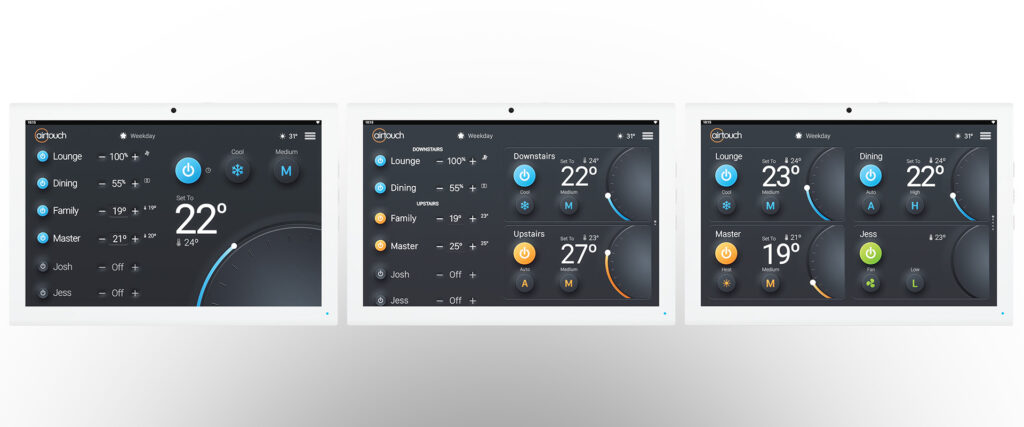Ducted vs VRF Air Conditioning Systems: How AirTouch 5 Enhances Your Control

In today’s climate conscious world, air conditioning is no longer a luxury it’s a necessity. As technology evolves, choosing the right air conditioning system has become more complex.
Two of the most popular systems are ducted reverse cycle and VRF (Variable Refrigerant Flow) systems. Each has its strengths, and with a smart controller like AirTouch 5, you can get more out of either system through intelligent, user-friendly climate control.
Ducted Reverse Cycle Air Conditioning
What is it?
Ducted air conditioning is a popular choice for Australian homes. It operates through a network of ducts, using a central indoor and outdoor unit to regulate temperature across the entire home.
Key Components:
-
Indoor Unit – Usually installed in the ceiling space.
-
Outdoor Unit – Works in tandem with the indoor unit to complete the refrigeration cycle.

Advantages
-
Whole-home coverage: One system manages the temperature throughout the house.
-
Zoning options: Prevents energy wastage by conditioning only occupied rooms.
-
Design flexibility: Concealed ductwork and customizable outlet designs allow for seamless integration into home aesthetics.
-
Multi-system support: Homes with two ducted systems can still use a single AirTouch 5, which automatically updates its interface to manage multiple systems and zones independently.

VRF (Variable Refrigerant Flow) Systems
What is it?
VRF systems use a single outdoor unit to support multiple indoor units, which can be different types such as wall-mounted, ceiling cassette, or bulkhead installations. These systems are common in commercial buildings, apartment complexes, hotels, and larger homes.
Advantages
-
Scalability: Ideal for buildings with varied cooling/heating needs across rooms or zones.
-
Efficiency: Only active indoor units use energy, reducing waste.
-
Zone-based comfort: Individual indoor units provide personalised climate control.
-
Flexible integration with AirTouch 5: Supports up to 16 indoor units, offering greater design flexibility.
AirTouch 5: Enhancing Climate Control
Whether you choose ducted or VRF systems, AirTouch 5 provides an advanced level of convenience and control.
Key Features:
-
Automatic interface adjustment based on system type and setup.
-
Zone management: Control temperature by room or area.
-
Multi-system control: Independently operate multiple systems.
-
Intelligent Temperature Sensor Technology: Enhances comfort with precise readings.
-
Energy monitoring: Track usage and optimise energy consumption.
Choosing the Right System
Your choice between ducted and VRF systems will depend on:
-
Building size and layout
-
Design preferences
-
Budget
-
Usage patterns
Both systems offer excellent performance, and with AirTouch 5, managing either becomes streamlined and user-friendly.
![airtouch-logo.png]](https://help.airtouch.net.au/hs-fs/hubfs/airtouch-logo.png?width=100&height=52&name=airtouch-logo.png)